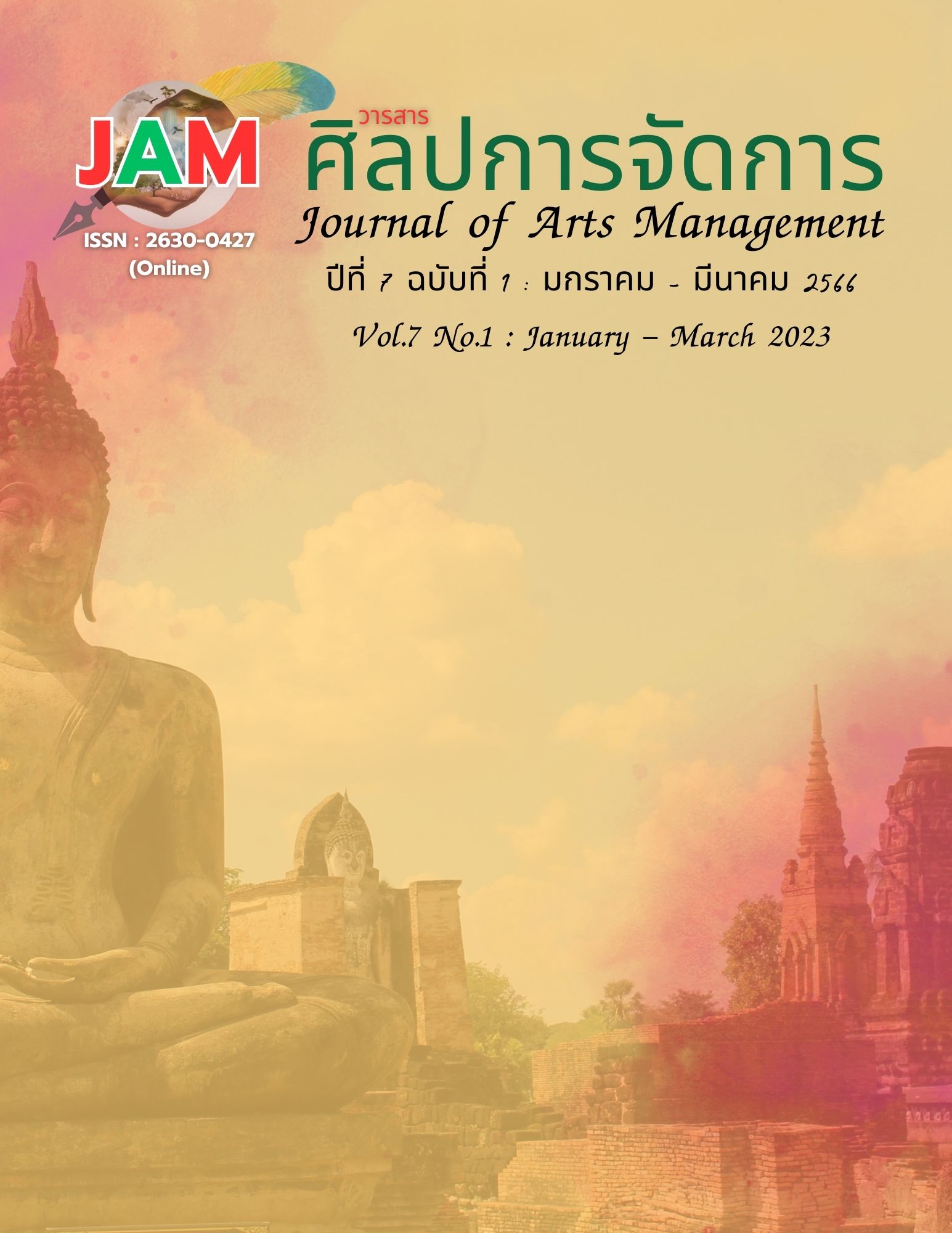Development of 15 Thailand Main-Provinces Database for Smart Buddhist Tourism
Main Article Content
Abstract
This article aimed to: 1. survey, collect data, and develop information on tourist temples and Vipassana Meditation Centers in 15 Thailand Main-Provinces; 2. design/Indicate routes for tourists and Vipassana Meditation Centers in 15 Thailand Main-Provinces; and 3. create a database for promoting Buddhist tourism in 15 Thailand Main-Provinces. It was a qualitative research project. The key informants were the 90 representatives from the abbot/site administrator, and tourists/meditators, and the 5 representatives from the government and private sector. The tools used were: 1. an in-depth interview form; 2. an action series form; and 3. an observational form. Data from the documents were used for content analysis. Data from interviews, group discussions, and observations were used for descriptive analysis. Summary of research results based on inductive principles.
The results showed that: 1. The 30 tourist temples and Vipassana Meditation Centers had information on all nine of them: 1) The temples had suitable locations; 2) It can find directions through Google Maps; 3) There is an ancient and valuable history; 4) There are attractions, such as a Vihara and an Ubosatha with architecture or beautiful arts; 5) The temples are important centers for activities; 6) Tourists are valued in Buddhism; 7) there are basic facilities and utilities; 8) there are other attractions on the same or similar routes; and 9) there is convenient transportation for easy access to tourist attractions. 2. The 30 tourist temples and meditation practice temples, which can be divided into 4 routes according to their similar characteristics: 1) Senior monks' portraits, sacred objects, and auspicious objects; 2) architecture and painting; 3) Cultural traditions and nature conservation 4) Meditation Practice Site and 3. The database for promoting Buddhist tourism consists of interesting things: 1) Master monks/idols and sacred objects; 2) architecture and painting; 3) cultural traditions; and 4) Dhamma practice.
Article Details

This work is licensed under a Creative Commons Attribution-NonCommercial-NoDerivatives 4.0 International License.
Views and opinions appearing in articles in the Journal of Arts of Management It is the responsibility of the author of the article. and does not constitute the view and responsibility of the editorial team I agree that the article is copyright of the Arts and Management Journal.
References
Affinity Co., Ltd., (2016). Tourism development direction project of Thailand in 10 years. Office of Tourism and Sports Economy Ministry of Tourism and Sports.
Akrangkun, S. (2008). Tourist behavior. Klang Nana Wittaya Printing House.
Anarato, P. N., Sirisutaphorn, P., & Gambhĩrapañño, P. V. (2020). The form of Buddhist Tourism of Monk the forest Temples in the Northeastern Part of Thailand. Dhammathas Academic Journal, 20(2) 35-46.
Apakaro, P. S. et al., (2012). Development of Buddhist Tourism Management Models and Processes in Thailand[Research Report, TRF.].
Bank of Thailand. (October 12, 2021). Tourism at a crossroad: the future of the Thai tourism sector. How to continue walking in the sky after rain. https://www.bot.or.th/Thai/ResearchAndPublications/articles/Pages/Article_18Aug2021.aspx.
Chairat, P. (2004). Innovation management for executives. Corporate Image Promotion National Innovation Agency.
Chaitavorn, P. C., Bunnakornkul, W., & Koomkrong, V. (2022). Guideline of development Watparattaphum Songkla Province to be vipassana meditation center. Journal of Multidisciplinary in Humanities and Social Sciences, 5(1), 352–363.
Chanchai, A. (2010). Innovation: Meaning, Types and Importance of Entrepreneurship. Business Administration Journal, 33(128).
Chinsiraprapha, A. (2021). The impact of Covid 19 on the tourism economy in the eastern region. Journal of Industrial Business Administration, 3(2), 1-4.
Damnoen, P. S. (2021). The development of student characteristics in according to the Nawaluk framework of the Buddhist integration of Buddhapanya Sri Thawarawadee Buddhist College. Asia Pacific Journal of Religions and Cultures, 5(2), 126-135.
Lalong, P. T., Wongshookaew, B., Aunchaoban, W., Worawongpisitkul, K., & Thongprayoon, P. (2022). The Development of 55 Thailand Sub-Provinces Database for Smart Buddhist Tourism. Journal of Arts Management, 6(1), 252–267.
Lanwong, A., Juntapoon, P. P., & Punnawa, P. P. (2022). Buddhist arts: Historical, development and influences on people’s living in the North – Eastern region. Journal of Arts Management, 6(2), 728–746.
Matichon Online. (March 7, 2021). TAT leverages 7 Go Local Scriptures to invade the second half of 2018, extending the first 4 months of 55 secondary cities, raking in 80 billion baht. Matichon Online. https://www.matichon.co .th/publicize/news_1018615.
Ministry of Tourism and Sports. (2022). (Draft) National Tourism Development Plan (2023-2027). National Tourism Policy Committee Ministry of Tourism and Sports.
National Innovation Agency. (2006). Innovation dynamics. Ministry of Science and Technology.
Phasakul, L. (2012). Tourist behavior. Chulalongkorn University Press.
Pike, S. (2008). Destination marketing: An integrated marketing communication approach. Butterworth-Heinemann.
Poommanee, T. (2013). Tourism industry. Ramkhamhaeng University Press.
Simphatanawong, D., & Inthongpan, P. (2022). Buddhist tourism management model along the Pa Udom Somphon Temple Sakon Nakhon Province. Journal of Buddhist Social Sciences and Anthropology, 7(3), 287-301.
Sirindhornmethi, P. S. et al. (2017). Developing the mind and wisdom of Sai Wat Pa to promote Buddhist tourism in the Northeast. Mahachulalongkornrajavidyalaya University.
Sroisri, P. T., Sukhuprakarn, S., & Namsena, S. (2022). Landscape architecture of temples promoting Buddhist tourism in Phetchabun Province. Mahachula Academic Journal, 5(4), 25-33.
Sukhothai Thammathirat Open University. (2005). Service psychology. Sukhothai Thammathirat Open University Press.
Tan, C. C., & Damnoen, P. S. (2020). Buddhist Noble Eightfold Path approach in the study of consumer and organizational behaviors.
Journal of MCU Peace Studies, 8(1), 1–20.
Warakulwit, S. (2008). Tourism industry orientation. Samlada Limited Partnership.
World Tourism Organization. (2011). UNWTO annual report 2011. World Tourism Organization.


